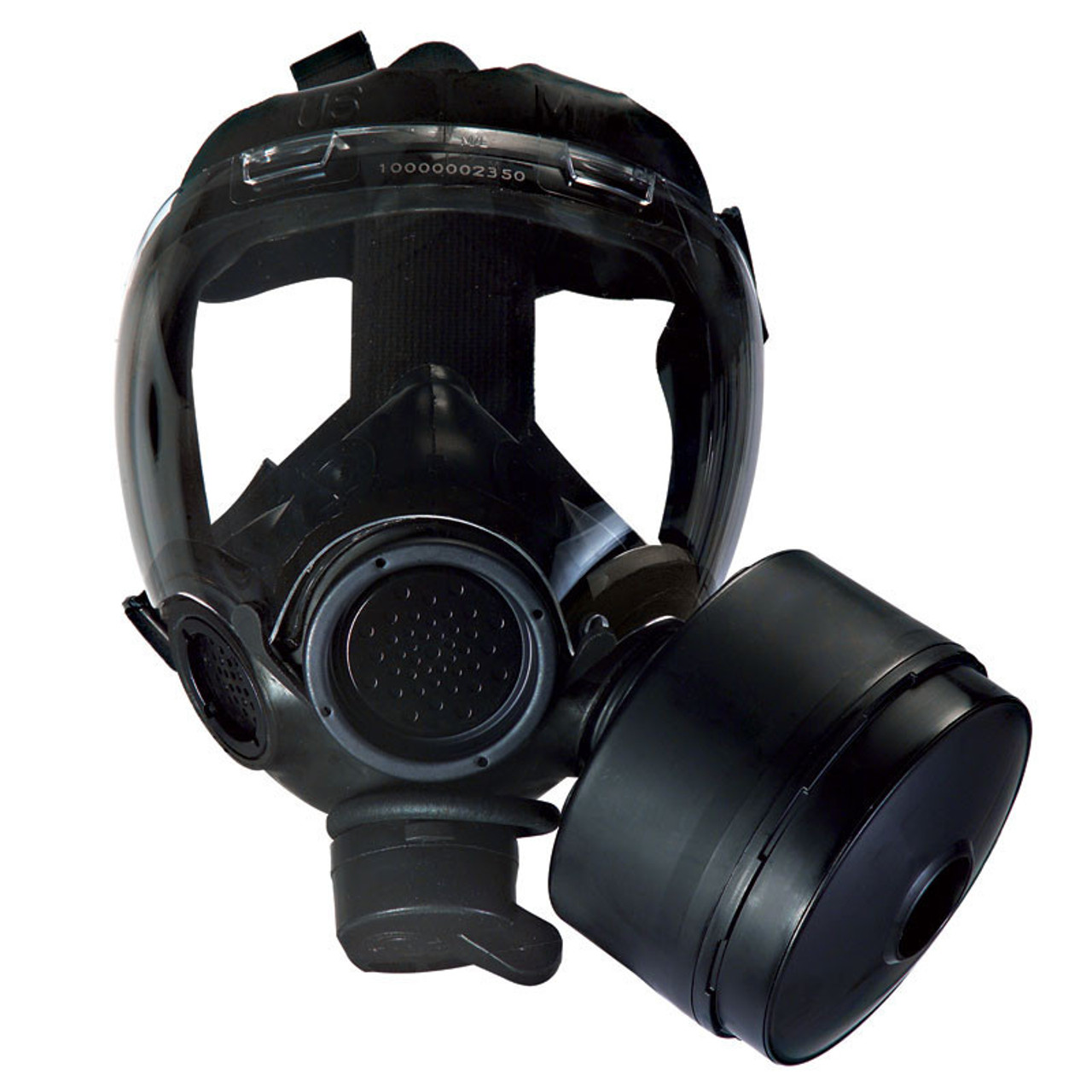


Other materials include the usual MCU polycarbonate outserts. Since the US Armed Forces doesn't require CBRN approval on their masks (they have their own standards), this was not an issue for them. CBRN certifications however, go a step further and demand the mask itself, not its accessories, to have these protective qualities. This resulted in the US Airforce and Navy using exterior butyl skins for the MCU and M40 to simplify decontamination and offer additional protection against these agents. MCU gas masks are made of silicone, and although silicone is desirable due to its hypoallergenic properties, which is an issue for users with sensitive skin, it deteriorates when exposed to blister agents for extended periods. In order to pass CBRN requirements and tests, the Millennium needed to be made of a material that would not lose its integrity when exposed to hydrogen nitride and other corrosive blister agents. The chief advantage the Millennium has compared to the MCU-Series, is in its use of Hycar nitrile rubber as the primary mask material instead of Butyl or Silicone, which was introduced on the Advantage 1000 in early 1990s. The resulting gas mask system, which used a very similar yet improved design and improved materials, would eventually be called the MSA Millennium. To simplify research and development, the mask's design was derived from the industrial MSA Advantage 1000 gas mask, which in turn is a civilian version of MCU-2/P that they were selling to the US Air Force and Navy.

MSA, which was one of the industry leaders involved in the creation of the new standards, developed one of the first masks that would meet and exceed these standards. Chief among the standards that had to be met were prolonged resistance against NBC agents, mask penetration and permeation, field of view, equipment interoperability and ability of equipment to operate reliably (at least 15 minutes) in environments with very high concentrations of chemical agents (including hydrogen sulfide and nitride, which damages silicone-based materials and masks). Army Edgewood Chemical Biological Center. The new standards were released in conjunction with tests and results derived by the U.S. The National Institute of Occupational Safety and Health (NIOSH), which was new back then, first released the CBRN standard on March 7, 2003.

This would eventually be known as the "CBRN compliant" classification. Because of this, and the ongoing threat of terrorist-deployed NBC agents, the US Government, Mine Safety Appliance (MSA) and related industries accelerated ongoing research on developing a new set of very stringent standards that would define protective clothing and respiratory systems. Available in a variety of styles and configurations.After the terrorist attacks of 9/11, the respiratory health issues encountered by the first responders (from all the dust and smoke) who didn't have adequate protection and the anthrax mails which followed shortly after, it was clear that there were inadequacies with the current equipment available to first responders. Featuring flexible lenses, wider field of view, permeation-resistant construction and built-in speaking diaphragms, these masks provide protection with a comfortable fit and superior visibility. Protect law enforcement and military personnel from a variety of respiratory hazards with this full line of CBRN and riot control gas masks.


 0 kommentar(er)
0 kommentar(er)
